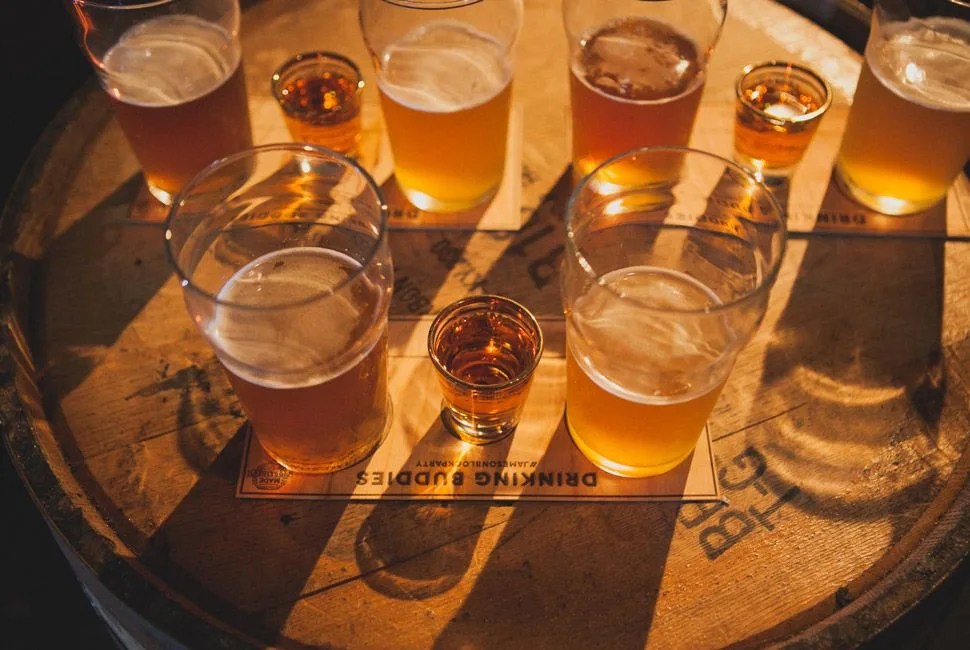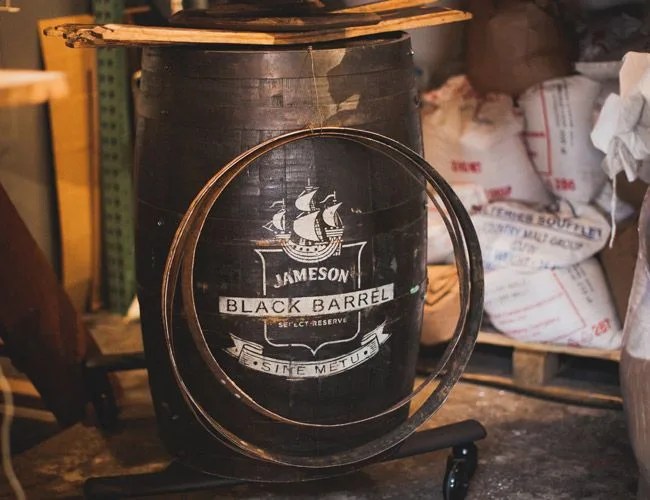Among the fastest growing trends named by brewers at the American Craft Beer Festival was barrel aging, so it’s no surprise that the world’s largest Irish whiskey producer, Jameson, is constantly approached by craft brewers looking for used barrels. Despite this, not once in Jameson’s 234 years of distilling whiskey had the company loaned their barrels to a U.S. company. Well, not until this year.
More Alcohol: Visiting the Jameson Distiller | Best Double IPAs | Tasting Dogfish Head’s Minute IPAs
“We want to stay in control of everything that comes out of our barrels”, explained Dave Quinn, Jameson’s Master of Whiskey Science. But Quinn’s visit last week to Brooklyn marked an exception to this rule. Months before, the distiller had loaned ten bourbon barrels that had held Jameson for six years to Brooklyn native Kelly Taylor, Master Brewer and owner of KelSo Beer Co.. The barrels were for aging KelSo’s IPA. Due to limited availability, the beer that resulted was only on tap for one weekend at Dirck the Norseman, a brewpub in Greenpoint.
At the brewpub, in a small room adjoining the dining room, reporters and industry types stood around tables lined with beer and shot glasses, waiting to try the limited edition beer while Taylor and Quinn spoke about the collaboration, a short documentary on the project airing on a screen behind them. On every table, three separate coasters held a shot glass of Jameson Irish Whiskey sandwiched between two beer glasses. In the first was KelSo IPA; in the second was KelSo IPA that had been aged in Jameson barrels. The effect was obvious: drink the traditional IPA, taste what it was aged in, then drink the beautiful marriage of the two. Taylor chose to age an IPA (although they are usually best when drank freshly canned) because the “fruity and spicy and floral” notes evident in the whiskey would complement those same flavors in the beer. After a few months of aging, he dry-hopped the IPA before bottling in order to add back any bitter flavors lost — and to remove any off-flavors added — during the aging process. The result is a unique beer in a unique segment.
Barrel aging beer isn’t entirely new, but it’s also relatively unexplored. The process is riskier than traditional brewing methods for a number of reasons. For one, barrel aged beer is expensive to buy and expensive to make. The barrels cost money. The factory floor space — which sits unproductive, sometimes for upwards of a year — costs money. There are also high risks of infections, oxidation or just poor-tasting beer. On top of this, Taylor had only 10 barrels, meaning he didn’t have room for error. Without a doubt, the brewer labored particularly hard over this brew. You could almost say he coddled it.
Sadly, by the time you read this, all of the KelSo IPA aged in Jameson barrels will have been drunk. But here are some tasting notes for the curious or optimistic beer aficionado, anyways. The aged IPA had taken on a darker appearance from the Jameson barrel, tasted like the vanilla and nut flavors present in Jameson and had a light floral aroma that was overtaken by the alcoholic smell of whiskey, like sniffing the empty glass of a newly finished highball.
The tasting — beer over shot over beer — showed just how personalized barrel aging can be. As whiskey and beer are produced with similar ingredients, the Jameson barrel enhanced and layered the IPA without overpowering it. It was like previous IPAs had been in black and white, and with this one someone had filled in the colors. To get this effect, Taylor checked the aging beer often and ensured he kegged it at the right time, and for good reason. He said he could take the same base beer, age it in five or six different barrels and end up with five or six distinct beers. The Jameson collaboration was another proof positive of barrel aging’s ability to produce subtle but complex and layered flavors.


